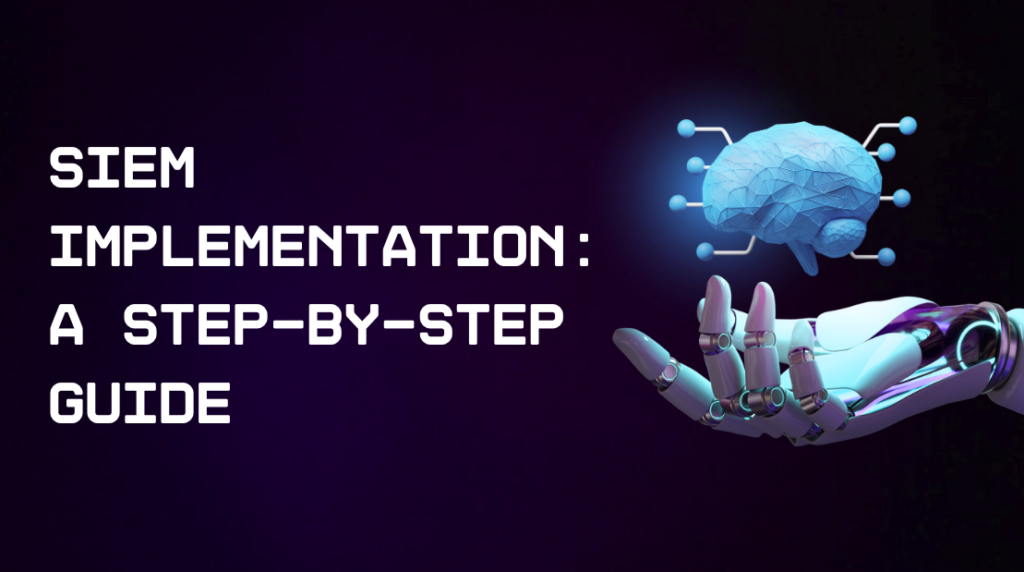KEY TAKEAWAYS
In today’s hyperconnected digital landscape, cybersecurity is paramount.
As Managed Service Providers (MSPs) strive to deliver comprehensive IT solutions, integrating Managed Security Information and Event Management (SIEM) into their offerings is becoming increasingly essential.
This post will delve into the benefits of incorporating Managed SIEM, the process of implementing it within MSP frameworks, and real-life examples showcasing its efficacy.
Securing Your Clients’ Assets: Managed SIEM empowers MSPs to proactively monitor, detect, and respond to security incidents, safeguarding clients’ sensitive data and assets from evolving cyber threats.
Differentiating Your Services: With cybersecurity concerns on the rise, offering Managed SIEM sets your MSP apart by providing an additional layer of protection and peace of mind to clients.
Scalability and Flexibility: Managed SIEM solutions are scalable, allowing MSPs to tailor security measures according to clients’ needs and adapt to changing threat landscapes effortlessly.
Comprehensive Threat Detection: Managed SIEM consolidates logs and data from various sources, enabling comprehensive threat detection and rapid incident response.
Streamlined Compliance Management: MSPs can leverage Managed SIEM to facilitate compliance with regulatory standards such as GDPR, HIPAA, and PCI DSS, minimizing legal risks for clients.
Enhanced Client Visibility: By offering Managed SIEM, MSPs provide clients with greater visibility into their IT environments, fostering transparency and trust.

Conducting a thorough assessment of your clients’ security posture is the crucial first step in implementing Managed SIEM effectively.
By comprehensively understanding their current security measures, you can identify vulnerabilities, assess risk tolerance, and determine compliance requirements.
This assessment provides the foundation upon which you’ll build your Managed SIEM strategy, ensuring that it aligns closely with your clients’ unique needs and objectives.
Once you’ve gathered insights into your clients’ security landscape, the next step is to define clear objectives for Managed SIEM implementation.
Are your clients looking to enhance threat detection capabilities, streamline incident response processes, or achieve compliance with industry regulations?
By setting specific and measurable goals, you can tailor your Managed SIEM deployment to address your clients’ priorities effectively.
Selecting the appropriate Managed SIEM platform is critical to the success of your implementation.
With a myriad of options available in the market, it’s essential to choose a solution that not only meets your clients’ current needs but also scales with their future requirements.
Consider factors such as scalability, flexibility, and ease of integration with existing MSP infrastructure.
Furthermore, evaluate the threat detection capabilities of the Managed SIEM platform. Does it offer real-time monitoring, advanced analytics, and customizable alerting mechanisms?
Assess the vendor’s reputation and track record in the cybersecurity industry, ensuring that they provide reliable support and timely updates to keep pace with evolving threats.
With the selected Managed SIEM platform in hand, it’s time to tailor the solution to your clients’ specifications. Work closely with your clients to fine-tune alerting thresholds, define incident response workflows, and establish data collection and retention policies.
Customize the deployment to integrate seamlessly with their existing IT environment, minimizing disruptions to their operations.
During the deployment phase, ensure thorough testing and validation to verify the effectiveness and reliability of the Managed SIEM solution.
Train your team on the intricacies of the platform to ensure proficient operation and seamless support for your clients.
By meticulously configuring and deploying the Managed SIEM solution, you can lay the groundwork for enhanced security and risk management.
Effective training and education are essential components of successful Managed SIEM implementation.
Provide comprehensive training sessions for your clients and their staff to familiarize them with the functionalities of the SIEM platform and best practices for incident response.
Empower them to leverage the full capabilities of the solution to enhance their security posture and mitigate potential risks effectively.
Offer ongoing educational resources, such as user guides, tutorials, and webinars, to support continuous learning and skill development.
Foster a culture of security awareness and collaboration, encouraging open communication between your team and your clients.
By investing in training and education, you can empower users to become proactive participants in their cybersecurity efforts.
Managed SIEM is not a static solution—it requires continuous monitoring and optimization to remain effective in detecting and mitigating security threats.
Implement robust monitoring processes to track key performance metrics, such as detection rates, false positives, and response times.
Regularly review and analyze security logs and incident reports to identify trends and patterns indicative of potential threats.
Managed SIEM involves outsourcing the management of SIEM systems to a third-party provider, whereas traditional SIEM requires in-house management and maintenance.
Managed SIEM offers SMBs access to enterprise-grade security solutions at a fraction of the cost, enabling them to enhance their cybersecurity posture without investing in expensive infrastructure.
Yes, Managed SIEM solutions are designed to integrate seamlessly with existing MSP tools and platforms, ensuring minimal disruption to clients’ operations.
Managed SIEM services typically include 24/7 monitoring, incident response, and regular updates and maintenance to ensure optimal performance.
By offering proactive threat detection and incident response capabilities, Managed SIEM enables MSPs to demonstrate their commitment to clients’ security and deliver tangible ROI.
Yes, Managed SIEM can be tailored to meet the specific security needs and compliance requirements of businesses across various industries, from healthcare to finance to manufacturing.
Incorporating Managed SIEM into your MSP offerings is not just about enhancing security—it’s about providing clients with peace of mind and staying ahead of emerging cyber threats.
By following best practices for SIEM implementation and leveraging real-life success stories, MSPs can position themselves as trusted cybersecurity partners and drive business growth in an increasingly competitive market.
We provide a range of cyber security professional and managed services. We will work with you to create the solution that manages your needs, your way.
Address: 4412 14th Ave, Markham, ON L6G 1C6
Phone: (647) 360-1551